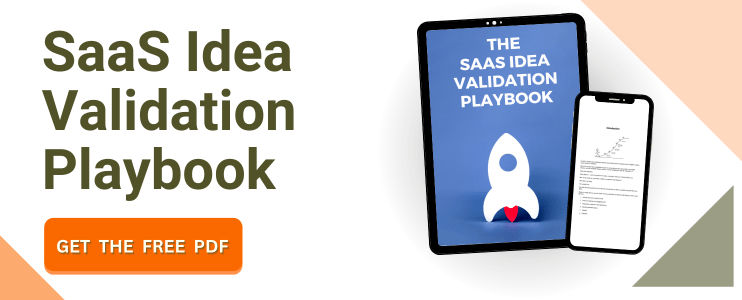A few years into my career as a web developer, I realized that getting into the 9-5 lifestyle was one the worst decisions I've made up until that point.
Using my passion for writing code to build someone else's dream and being paid a tiny fraction of the potential upside was just unbearable.
It felt like I was leaving millions of dollars on the table in exchange for being able to buy a few cool gadgets.
So, in 2008, I took a shot at starting my first SaaS business.
And I can remember quite vividly that shortly after I settled on the idea for what the app was going to be, I've realized I had absolutely no clue how to price it.
But that was a long time ago, and I've learned a lot about pricing SaaS products while working with many successful startups over the past decade.
I want to show you a few pricing strategies that you can use as a starting point for pricing your own SaaS products.
The Challenge
Here's what pricing looks like to the untrained eye (or what I used to think pricing was).
On the one hand, if you're pricing your product too low, you risk leaving money on the table and having to increase your prices later on. That's probably not going to sit well with existing users.
On the other hand, if the price is too high, you risk sending all your users to your competition.
It might seem like you have no choice but to get it right from the get-go. But that's not entirely true.
I now see pricing as a positioning tool that helps you change how people perceive your product.
And that's important because your product is not for everyone. You've chosen a very specific segment of the market that your product can help.
If you haven't done that yet, make sure to validate your idea first so you know who your target market is.
But if you have done that already, you'll see how pricing can further optimize your position on the market and make your product stand out from the crowd.
For example, let's assume we have a large segment of the market that consists of consumers, entrepreneurs, and enterprises.
By pricing your product higher, you will attract only entrepreneurs or enterprises, excluding consumers.
And, if you understand what you're doing, pricing can be a powerful positioning tool.
So then, the real challenge is not how high or how low to price your product but how to find a blue ocean where your product can thrive.
Value Pricing
People (including business people) are not dumb. They want to get a great deal in exchange for their money. They want the value of what they're getting to be much higher than what they're paying for it.
So, how much value does your product bring to the table? Like, what's the exact number?
Answering that question is impossible without knowing who your customer is, what problem they want to solve, and how much that problem is worth to them.
Because if you know who you're helping and how much value they get out of your product, then pricing becomes easy.
Here's how I see it:
If your SaaS product can help a business owner make an additional $100,000/year in revenue, you can easily charge $100/month (i.e., 1% of the value they're getting) or more.
If you don't know the value you're delivering, you must find out what it is.
Once you have it, you can use the following pricing tools to optimize your product's pricing model so that your users get the most value in exchange for their hard-earned cash.
Pricing Tools
Your goal when pricing your SaaS product is to maximize the value delivered to the customer while also raising your prices as much as possible.
Whether that's 1% or 10% or more of the value delivered, that's up to you and the specific market you're targeting. It's a good idea to test different pricing models to see which works best for your particular scenario.
So pricing models become tools that you can use to optimize value delivered vs. money exchanged.
Note that you don't have to pick one or the other. You can (and most SaaS products do) combine these options.
- Freemium - Offer a free-forever tier to get people to use your product, upgrade to a higher tier, and recommend it to others. But this model pushes your revenue into the future, so make sure you're ok with that.
- Cost-based - You take the total cost of providing the service (e.g., development, hosting, employees, etc.) and raise that number by some percentage.
- Value-based - The price is based on the value delivered. This is also what we have discussed so far, and I strongly believe it's a healthy mindset when pricing anything.
- Segment-based - You charge different prices based on which type of user you're selling to (e.g., solopreneurs, teams, enterprises).
- Feature-based - Higher tiers offer more and more features. You can combine this with segments to offer segment-specific features (e.g., collaboration for teams).
- Usage-based - Charging based on how much your users use the product (e.g., number of users, data stored, number of transactions, etc.)
- Add-on pricing - On top of the monthly price, you charge for additional features or modules. It allows users to personalize their plans and only pay based on their needs. Cloud-based hosting companies often do this (e.g., Heroku, AWS, etc.)
- Lifetime license - Pay a flat fee once, and never worry about charges again. This option is becoming more popular as people get tired of the subscription model.
I don't know if I've covered all possible options, but this should give you a rough idea of what's available and how you can come up with a pricing model that makes sense for your product.
Acquisition & Life-Time Value (LTV)
Every SaaS product must have a way to acquire new users, and that process has a cost attached. Whether you're paying for ads or a sales team, or maybe it's a high-touch sales process, you need to factor those acquisition costs into your pricing.
The challenge with acquisition is to get it lower than what the average user pays for your service during the entire period that he's subscribed. This is also known as Life-Time Value (or LTV).
If you can get the acquisition cost lower than the life-time value of a user, you can scale your product to the moon.
For example, if it costs you $100 to acquire a user, your LTV needs to be higher than that. Otherwise, you're not making any money.
If it's lower, you're losing money.
Your job is to price your product as high as possible while keeping users using it longer.
“He or she who can afford to spend the most to acquire a new customer, wins.” - Dan Kennedy
If you know that, on average, a user is willing to spend $X with you, then you can spend up to $X on acquiring more users and still remain profitable.
Discounts
Everyone loves a good offer, and discounts are often the final push people need before they pull out their wallets and purchase.
Here are a few that I've seen:
- Offering a free trial or a limited account to gain trust with your users before they upgrade to a higher tier.
- Annual discounts help users save a few bucks and help you increase the customer's lifetime value (LTV).
- Partner, reseller, referral, and affiliate pricing to incentivize others to advertise your product.
- Non-profit or educational pricing to help the community and spread the word about your services.
Urgency & Scarcity
Have you ever visited a sales page wondering if you should buy the product or service, only to eventually leave without making a purchase? I'm sure you have.
That happens all the time, and so many sales are lost because of it.
Unless there's a good reason to buy your product right now, most people won't do it. So you have to give them a reason.
And you can do that using scarcity (limited supply) or urgency (time is running out).
You can get pretty creative here, but some of the more popular methods of adding these elements are Black Friday, Cyber Monday, etc. deals (urgency) and offering some bonus to a limited number of buyers (e.g., video consultation, assessment, etc.)
Final words
If you have no idea where to start, look for similar products in your space that are doing well and start there. Pay attention to how they sell the product, not just the features they have.
It's also worth noting that if nobody complains about your price, it's probably too low.





